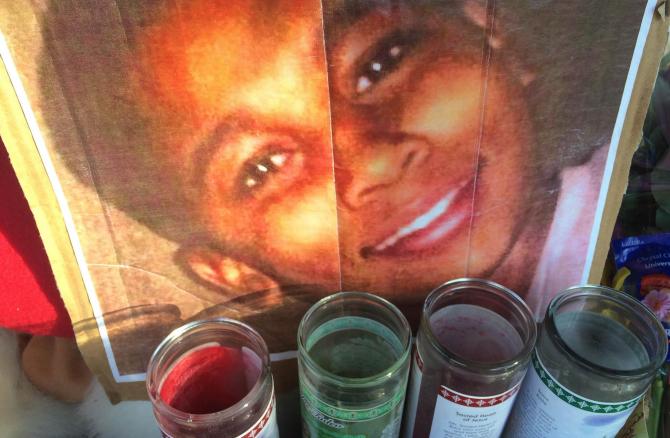
A few weeks ago, one of America’s leading voices on black respectability, Lawrence Otis Graham, wrote in the Washington Post about the realization that respectability had failed to protect his son from the barbs of racial bias. In spite of his efforts as a father to make his son appear to be as accomplished and educated as possible, two white men slurred and threatened his son. This verbal attack by strangers became doubly frightening for Graham when his son’s school administrators did not take the incident seriously. They could not imagine what might be so frightening and traumatizing about being slurred.
For me, the article was truly revelatory. Here was Graham, author of a book called Our Kind of People: Inside America’s Black Upper Class, who worked to cultivate America’s knowledge about a long-standing black American elite, now acknowledging that the artifice of appearing to be “good enough” had failed. His article lays bare the weakness at the heart of the politics of respectability: that no matter how neat, how well-educated, how elite a black person might be, it actually provides little protection from people who can’t imagine themselves in our shoes.
Perhaps respectability, as a strategy, is losing its currency. Graham is no longer convinced. Bill Cosby, the nation’s most prominent voice on young black people pulling up their pants and having Eurocentric names is dealing with his own problems right now. The Post’s Nia-Malika Henderson wrote that even the president’s calls for respectability are on the wane, so I was hopeful.
Then I heard about a toy gun buyback in Cleveland.
It’s being organized in the wake of the police shooting of 12-year-old Tamir Rice, who was playing with a toy gun in a park.
The Cleveland police officer who shot Rice, Timothy Loehmann, fired on the child just seconds after pulling into the park in response to a 911 call. Investigative reporting revealed that Loehmann had been pushed out of a job on the police force in rural Independence, Ohio, after he was deemed unfit for the job, and clearly should not have been hired in Cleveland. When the officer and his partner called in the shooting, they reported that they had shot a black man around 20 years old. Even looking into the face of Tamir, who had the chubby face and smaller proportions of a child, with a toy in his hand, the police saw a man with a gun.
Community organizations in Cleveland must be at a loss for what to do. It is devastating to know that a child was gunned down for playing in the park. The folks organizing the toy gun buyback have also planned community activities and educational programs. But the buyback was essential to their plans to “keep toy guns out of the hands of kids.”
Not real guns out of the hands of poorly trained, racially biased police.
I get it. As a mother I do not buy toy guns for my kids. They are not allowed to play first-person shooting games—I’m not interested in having them play games that make quick disregard for human life the norm. But the problem here isn’t Tamir Rice’s behavior. It’s the actions of the state to fail to take the time to see Tamir, both in life and in death.
Generations ago, when African Americans faced the terror of lynching and race riots, we clung to notions that perhaps exhibiting behavior that was exemplary in the eyes of white Americans would shield us from violence. This etiquette of Jim Crow left black Americans in the terrible bind of constantly performing their submission to white Southerners, day after day. Diverting their eyes from the gaze of whites, jumping off sidewalks to let white people pass, and saying a quick “Yes, Sir” to every command were just some of the rules black Southerners living in the age of segregation adopted to survive. But the rules provided no guarantee, then or now.
So for decades, black families have asked that their sons and daughters learn the way to be safe. To be courteous if they are stopped by the police, to keep their hands out of their pockets, to quickly and completely comply with every command, even to change the way they dress and speak in order to be seen by white people as a black person who can be trusted—and not as a threat. Now, we’re asking that our boys give up their toys to not be seen as a threat. I understand this impulse. It’s the expression of our desire to believe that somehow there could be something that we could do buffer our families, to keep our daughters and sons safe in an unjust world.
But in just the last few months, we’ve seen too many instances—like the dash cam footage of a police officer shooting a black South Carolina man—which remind us that even courteous compliance is not enough when you are faced with a person determined to see something that is not there. What difference do the rules make when even our compliance looks like resistance?
So this week, when people are organizing across this country to continue to protest the nonindictments in the killings of Eric Garner and Michael Brown, and the shooting death of Tamir Rice, I want us to focus on what police jurisdictions must do. Let’s not just keep adding to the list of what we tell our sons and daughters to do to be safe. Let’s keep our eyes focused on justice.
Blair L.M. Kelley is an associate professor of history at North Carolina State University and the author of the award-winning book Right to Ride: Streetcar Boycotts and African American Citizenship in the Era of Plessy v. Ferguson. Follow her on Twitter.















